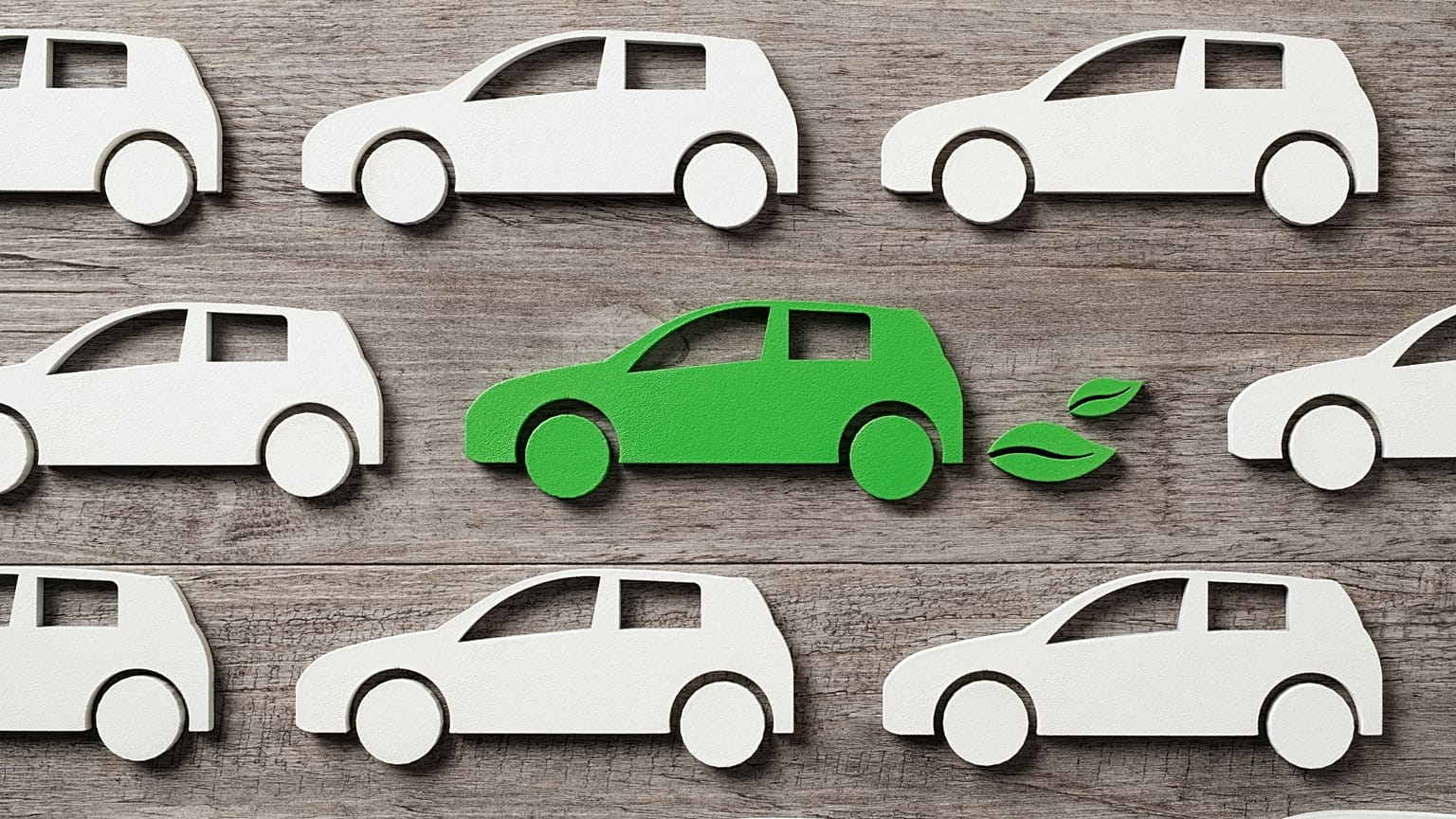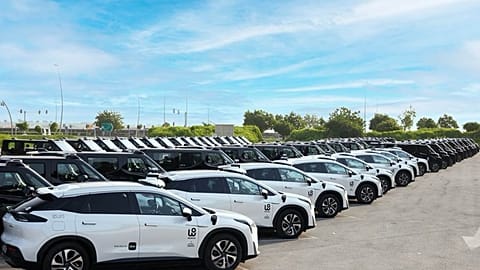Carmakers are pledging billions to develop supposedly eco-friendly EVs but their manufacture is not carbon-free. How do they compare with ICE cars?
Carmakers are pledging billions to develop new battery electric vehicles (BEVs) with the expectation that more than 30 million of them will be on European roads by 2030.
Electric cars may generate no tailpipe emissions but the manufacture of the vehicles and batteries do still contribute to carbon emissions.
So, just how clean are BEVs, and how do they stack up against traditional internal combustion engine (ICE) cars that run on petrol or diesel?
What is the environmental impact of the production process of a BEV?
Life cycle emissions are those created by the production, use, and disposal of a product; so for an electric car, everything from the raw materials, and the battery power sources to the recycling and reuse of the vehicle at the end of life must be accounted for.
The extraction, refinement, transportation, and manufacture of lithium-ion batteries is a very energy-intensive process which means that emissions are higher in the production phase of battery electric cars compared to an ICE car.
While the manufacturing process for ICE cars may not be as high, it still has a significant carbon footprint.
Reuters reported earlier in the year that Volkswagen and Toyota were aiming to be carbon neutral by 2050, while Hyundai Motor Group said Hyundai Motor and Kia were "accelerating efforts" to become carbon neutral.
All new vehicles from Mercedes-Benz will be net carbon-neutral along the entire value chain by 2039 and General Motors (GM) plans to be carbon-neutral by 2040 in its global products and operations.
In contrast, Swedish company Polestar ambitiously aims to produce a net-zero car by 2030 by identifying and eliminating all carbon emissions, from the extraction of raw materials to production through to end-of-life handling.
The carbon gap between BEV and ICE cars may be significant when a car is first sold but during the lifetime on the road, ICE cars continue to emit CO2 while electric cars emit no emissions except particles from tyres and brakes.
According to research by Transport & Environment (T&E), the umbrella body for European NGOs promoting sustainability, an average EU electric car is close to three times better, in terms of carbon emissions, than an equivalent petrol or diesel car - and that gap continues to widen.
The benefits of BEVs will only increase as the electricity grid becomes greener but even a BEV driven in Poland with a battery produced in China, still emits 37 per cent less CO2 than petrol.
A reduction of 83 per cent can be achieved with an electric car with a battery produced in Sweden and driven in Sweden. They also predict that electric cars bought in 2030 will reduce CO2 emissions four-fold thanks to an EU electricity grid relying more and more on renewables.
But what about the battery?
The raw materials used in the production of batteries are one of the key factors in the price of BEVs and why they still remain more expensive than ICE equivalents.
As battery technology improves, new alternatives to the standard lithium-ion chemistry will emerge. Potential alternatives to these raw materials are also being explored such as the development of a new sodium-ion battery by CATL, a Chinese battery giant.
BYD, the world's largest maker of electrified vehicles, recognises the importance of reducing the use of rare minerals in battery technology, and its Blade Battery unit is produced without the use of cobalt.
In the meantime more could be done to help reduce the environmental impact of mining. Reinvesting profits into local communities to support education and training would provide opportunities that too often lie out of reach of the people in developing countries.
One important step to reducing life cycle emissions from electric cars is recycling or reusing the battery.
The European Commission’s proposed regulation of batteries is the world’s first-ever sustainable battery law, which seeks not only to ensure ethical mining techniques but also to reduce demand for mining by more effectively recycling the raw materials.
In July, the Council of the EU adopted a new regulation that establishes end-of-life requirements, including collection targets and obligations, targets for the recovery of materials, and extended producer responsibility. This will go far in fostering a circular economy.
Upon reaching their end-of-life in BEVs, batteries may be unsuitable to be reused in cars but this creates a huge opportunity to reconfigure them for a "second life" - including electricity storage on the grid - and so lowering the overall battery production carbon footprint.
Another solution is to reuse what we already have with shortages of raw materials are driving investment in battery recycling. The jury is still out, however, on how environmentally or economically sustainable this will prove to be as the recycling process also has a high carbon footprint.
There is overwhelming evidence that over the course of their driving lifetimes, BEVs create fewer carbon emissions than ICE cars and are therefore better for the environment.
More advanced battery technology and manufacturing techniques will continue to improve the lifetime of the batteries, which will also result in extended lifetimes for electric vehicles.
Substantial challenges span the entire BEV life cycle, but it is worth remembering the impact on the environment of oil extraction for fuel is much greater.


















